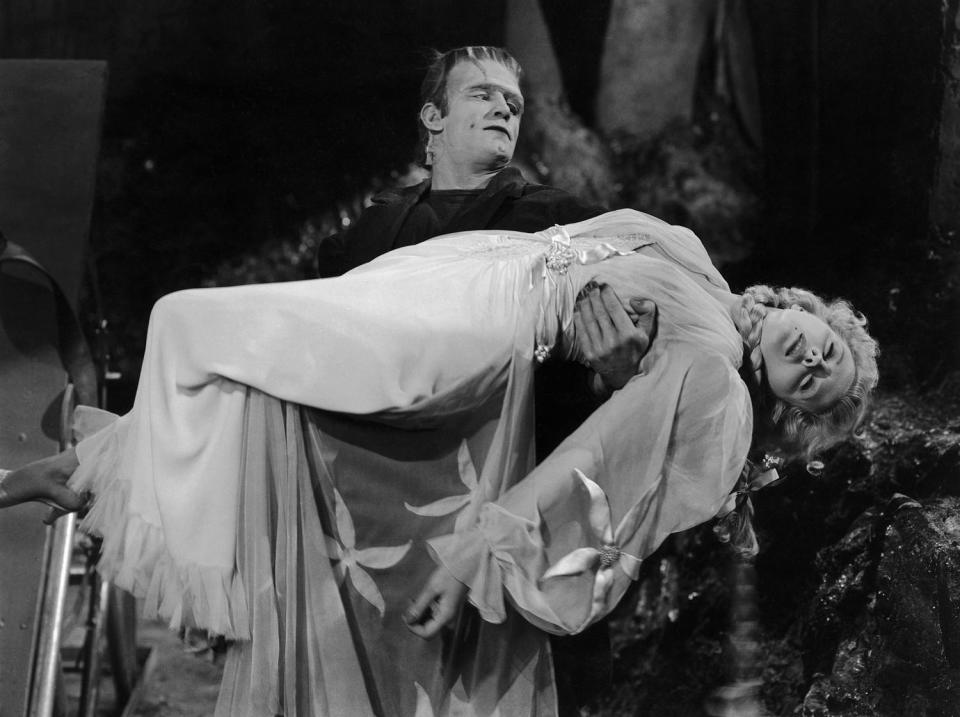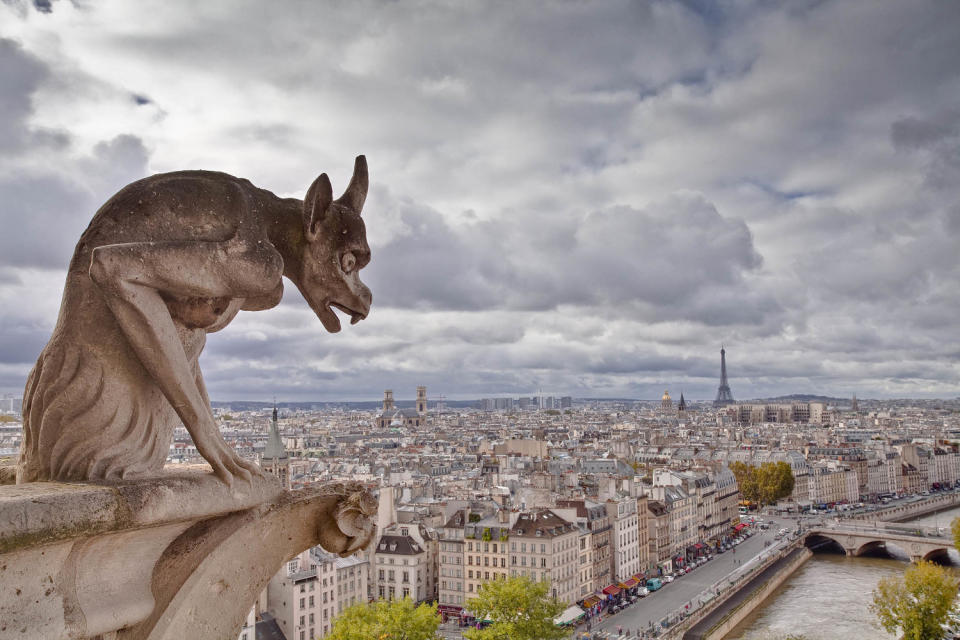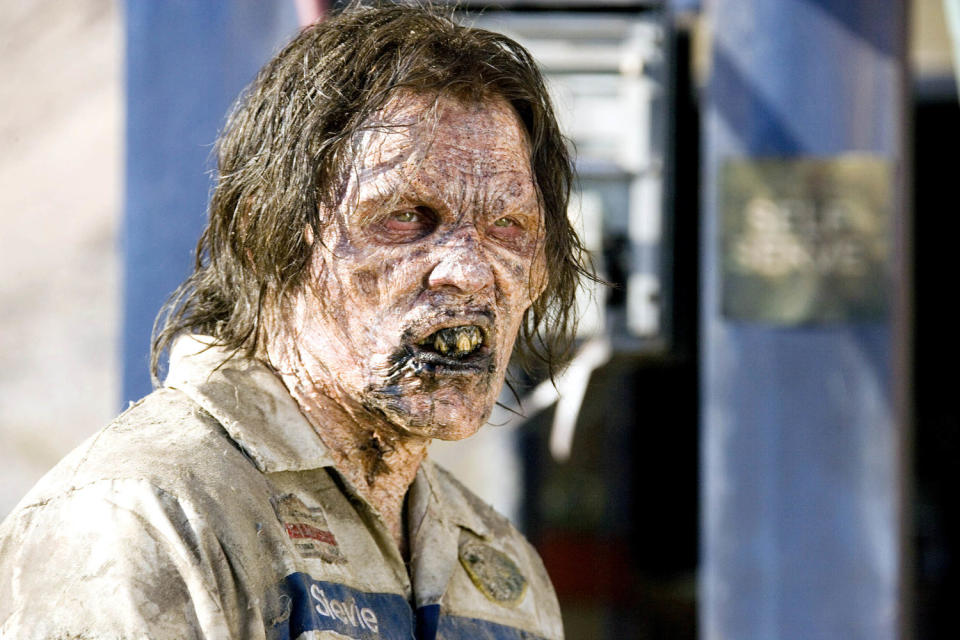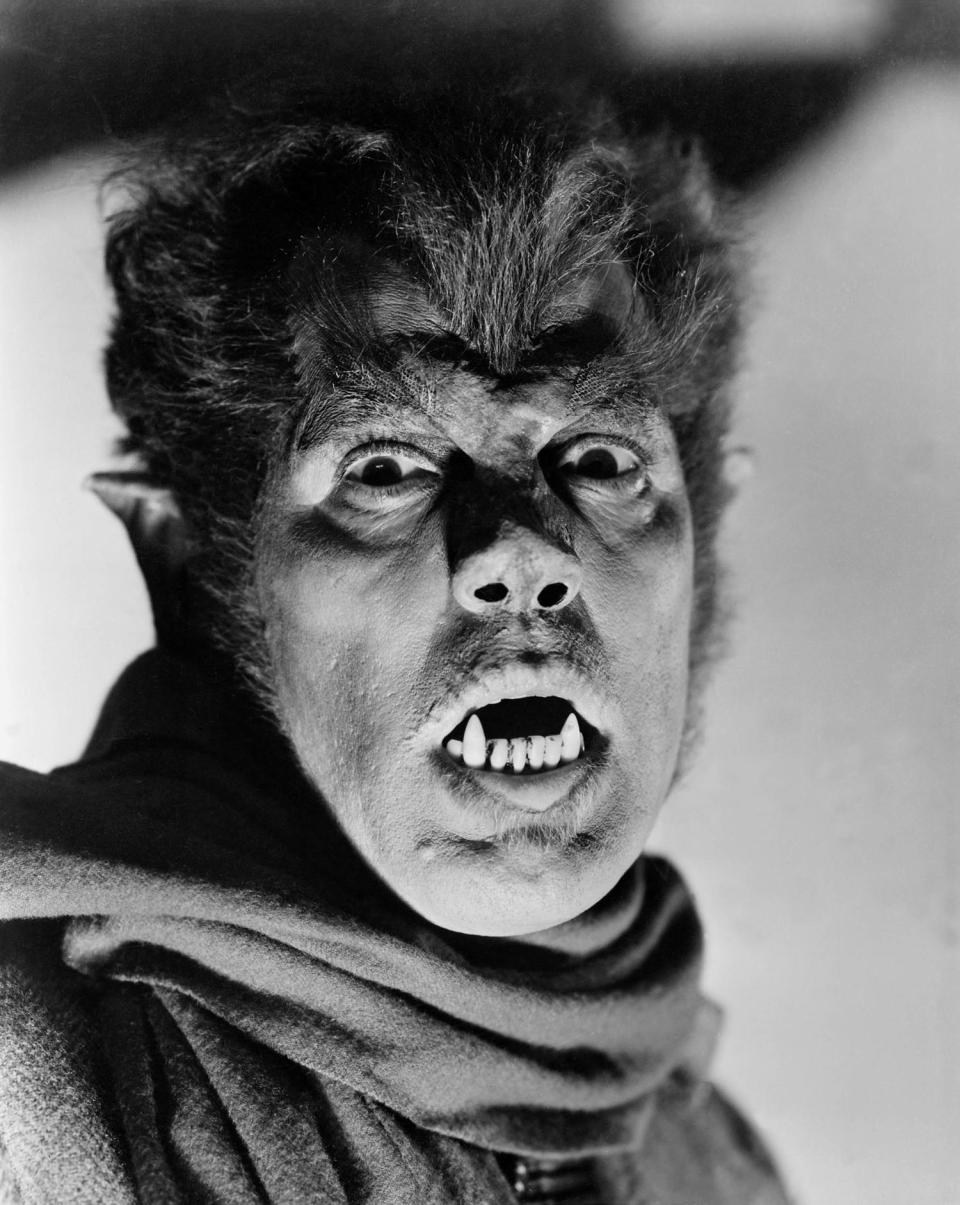The scariest Halloween monsters and their origin stories
Halloween is on the horizon and from now through October 31, everyone's attention is turned to all things spooky.
How did the holiday get its start?
“Halloween can be traced back to an ancient Celtic festival called 'Samhain' where people gathered around large bonfires and wore costumes to ward off evil spirits and the ghosts of the long departed,” says Jennifer Williams, author of K-12 history curriculum and creator of museum educational programming.
Along with scary movies, sinister songs and jack-o'-lanterns, Halloween monsters stand tall this time of year, and Williams explains why.
“Spooky season has been around for thousands of years and, so too, has curiosity about scary monsters,” Williams tells TODAY.com. “Like Halloween, your favorite things that go bump in the night may just have historic roots.”
From folkloric tales passed among generations to Tinsel Town flicks like “Frankenstein” and “Dracula,” monsters have carved a decidedly, shall we say, monstrous niche in our collective imagination.
If you're wondering about the backstory behind some of your horror-film favorites including mummies, witches, vampires, werewolves and other mythical beasts, you're in luck because we've talked to the experts and collected some fascinating tidbits to help explain how they came into existence.
Read on to learn more facts behind these popular Halloween creatures.
Frankenstein

Of all the mythical monsters, Frankenstein is probably the most famous.
Brought to life by author Mary Shelley in the 1818 novel by the same name, the mythical monster was said to have been inspired, in part, by trauma and loss in Shelley's personal life.
The daughter of a philosopher and feminist, Shelley eloped with an already-married poet at the age of 17. The couple bore a premature child, who died shortly after birth. Soon after, Shelley's half-sister committed suicide, along with her husband's first wife, who killed herself a few months later.
The publishing of her novel, "Frankenstein" coincided with Shelley giving birth to another child, according to an Ohio State University article, which concludes that much of the book was likely written while Shelley was "pregnant and in mourning, overloaded with images of birth and death."
According to storytelling consultant and filmmaker C.M. Conway of “How to Successfully Fail in Hollywood," while Frankenstein may have first reared his bolted, green head in Mary Shelley’s classic horror novel "Frankenstein," the monster's roots go back further than that.
In fact, Shelley's book is famously subtitled, "The Modern Prometheus" for the Greek god by the same name.
What do they have in common?
“Prometheus was the God of Fire and famously defied the gods chained to a rock. He steals fire from Mount Olympus and gives it to humanity,” explains Conway.
Both Frankenstein’s creator and the Greek god Prometheus defied forces greater than themselves in trying to benefit humanity with their creations with mixed or monstrous results. FYI: “Prometheus means forethought in Greek,” adds Conway.
Cyclopes

For some people, the word “cyclops” is reminiscent of reading Homer’s classic book "Odyssey" in which a one-eyed giant cyclops named Polyphemus takes on the hero, Odysseus. Others, however, may recall seeing these massive monsters on the big screen in movies including "Krull" or featured in Marvel comics like "X-Men."
Regardless of how the moniker rings a bell, "Cyclopes are other famous monsters from Greek mythology and huge creatures with one eye in the center of their foreheads,” says Conway.
“Three groups of Cyclopes are said to be the three brothers (Brontes, Steropes and Arges) who made for Zeus (the ruler of the gods) his thunderbolt weapon,” she continues.
Of the monsters, whose namesake means “circle-eyed” in Greek, Conway explains that “originally, they were imprisoned blacksmiths, and had one eye due to the deal they made with Hades to see into the future."
Vampires

Ah, how these bloodsuckers captivate our imagination. The subject of endless books, vampire movies and TV shows, our fascination with vampires has lasted throughout the ages and shows no signs of slowing down anytime soon.
Dating back centuries, the idea of undead monsters who prey on the blood of unsuspecting innocents first took hold in Eastern Europe. That said, interestingly enough, almost every culture in history has folklore surrounding creatures of the night who crawl out of graves in search of humans to feast upon.
The first known book to popularize the myth is John William Polidori's "The Vampyre," which gave the creature its enduring moniker back in 1819. Nearly 80 years later, Bram Stoker penned the classic novel "Dracula," cementing our modern-day notion of vampires forever.
We'd be remiss, however, to not mention Bela Lugosi's portrayal of Dracula in the 1931 movie by the same name, which still stands as the romancing, debonair bloodsucker we associate with vampires today.
Lastly, there's Stephanie Meyers' "Twilight," of course. Whether you're Team Edward or Team Jacob, you have to admit, the series left plenty of fans wondering (or wishing) if vampires are real or not.
If you're among them, find out more here.
Witches

It wouldn’t be a round-up of Halloween's most celebrated icons without including witches.
Along with being one of the most popular Halloween costumes for kids and adults, their imagery and likeness can be found just about everywhere during the spooky season.
But, contrary to popular belief, witches are far more than broomstick-riders and cauldron cookers.
In fact, witches and witchcraft are part of a much broader form of paganism and many of our pop-culture perceptions around those who practice it are steeped in misinformation and outdated folklore.
Despite what you may see in the media, witchcraft has been around for hundreds of years and revolves around a set of spiritual beliefs grounded in the natural world. Those who practice it embrace Wiccanism, magic and often celebrate earth cycles and seasons.
While we may think of witches only as part of Halloween, there's far more to know and you can learn all about it right here.
Gargoyles

Should you ever find yourself visiting local medieval churches in Europe, Williams suggests that while looking around, you also look up.
Why? Because “perched atop these holy roofs and with gaping maws forming drain spouts you will find gargoyles," Williams tells TODAY.com.
As Williams explains, these monstrous stone images kept rainwater from eroding cathedrals like Notre Dame, but also held deeper meaning. “Their grotesque faces and stout bodies were designed to represent evil and remind sinners of the dangers of hell. Medieval folks were also a superstitious bunch, and they believed gargoyles warded off evil spirits and demons,” she says.
Zombies

Zombies are one of the most frightening Halloween monsters simply because the idea of the dead returning to walk among the living is downright scary for most people.
But where does it stem from? The frightening transition from a corpse returning to life can be traced back to Voudou, or as it's more commonly referred to "Voodoo."
“The success of shows like ‘The Walking Dead’ and ‘The Last of Us’ depict a lasting pop culture craze – zombies,” says Williams who goes on to explain that the word "zombie“ likely comes from somewhere in West Africa where it arrived with enslaved people on the coasts of Haiti.
"There, a religion that meshes Catholicism and West-African beliefs called 'Voudou' was born," says Williams, "and so was the zombie.”
Williams continues by saying that a Voudou priest or sorcerer, called a “bakor” was said to perform rituals that could reanimate the dead and create zombies.
“Like Haiti, the Creolized religion of Voudou arrived on U. S. shores with enslaved people and so did their stories about zombies. These stories frightened enslavers and eventually made their way into American popular literature and film,” says Williams.
The Grim Reaper

The origin of the Grim Reaper is almost as scary as the monster itself and dates back to the Middle Ages when one of the deadliest plagues in history killed off nearly one-third of the earth's population.
“During the Black Death, a plague that swept across Europe in the 14th Century killing hundreds of thousands of people, there arose imagery of a figure cloaked in a black mourning robe, often with a skeletal face and carrying a scythe,” says Williams.
According to Williams, during that dark period, art often depicted death and the personifications of death that permeated Europe as scores of people suffered and died from the plague.
“The black cloak the Grim Reaper dons is a robe of mourning. It is also similar to the dark robes frequently worn by the monks who oversaw deathbed rites and funerals. The scythe is a tool used to harvest crops, just as the Grim Reaper must harvest souls, and, of course, this reaper is a skeleton because skeletons are representative of death,” says Williams.
Despite the centuries-old imagery, the name “The Grim Reaper” didn't become associated with the cloaked figure until 1847, when it was used in a devotional called "The Circle of Human Life," according to Williams.
After that, the two were irrevocably linked.
Melonheads

“According to the legend, Melonheads are humanoids with bulbous-shaped heads that live in the woods and attack any unsuspecting passersby,” says Carrie McCabe, podcaster of “Ain’t It Scary with Sean & Carrie” and horror filmmaker.
According to McCabe, the monsters are mainly native to New England, though versions of the folklore can also be found in Michigan and Ohio.
Though there are variations to how and why Melonheads came to be, one of the most common stories revolves around a Connecticut asylum that supposedly burned to the ground in the fall of 1960.
McCabe explains that according to legend, all souls were lost in the fire with the exception of 10 to 20 patients, who supposedly survived and escaped into the woods.
“Our melon-noggined friends allegedly descend from these escapees, who are said to have resorted to cannibalism and inbreeding to stay alive and thus created warped little baby monsters with possible psychoses that roam the forests of the state until they want to pop out and spook some trespassers,” says McCabe.
Other retellings of the monster myth have escapees fleeing a prison, a campground or other creepy place that went up in flames, sending all its occupants to forage in the forest.
“Yet another version of the story makes the Melonheads scions of a Colonial family that were banished to the woods after accusations of witchcraft,” McCabe says.
Flatwoods Monster

If you've never heard of the Flatwoods Monster, it may be because you aren't local to the Appalachians, which are home to this robust legend.
Like something straight out of a UFO movie, the Flatwoods Monster myth originated more than 70 years ago and stems from a story about an alien encounter.
“On September 12th, 1952 in Flatwoods, West Virginia, brothers Eddie and Freddie May were playing with friends when they witnessed a strange object in the sky seemingly land on a nearby farm,” shares McCabe.
“Along with their mother and older cousin, the boys went to investigate ... and encountered a strange, giant creature (or was it a machine?) that terrified them and would create mythology and questions for decades to come," she says.
Thus the Flatwoods Monster was born and, according to McCabe, it's been "hypothesized to be an alien from another planet, or a cryptid native to the woods of West Virginia, or a sibling of the famous Mothman — or perhaps the Mothman ‘himself,’” says McCabe.
Werewolves

Half-man, half-canine, werewolves have been around for centuries. At least in folklore, anyway.
What's the origin of the enduring legend?
While stories of shapeshifters have circulated in every culture throughout history, including the Greeks, the werewolf as we know it today, has its roots firmly planted in the movie "The Wolf Man."
Portraying the tortured monster, actor Lon Chaney Jr. set the bar for all werewolves and werewolf movies that followed the 1941 film.
Many of the things we associate with modern-day lycanthropes come from the iconic movie, including the notion that the monsters can only be killed by a silver bullet and the visual of werewolves howling at the moon.
If you're wondering if werewolves are real or not, you can learn all about lycanthropes right here.
This article was originally published on TODAY.com

